Disclosure: This article contains affiliate links. We may earn a commission from purchases at no extra cost to you, which helps our travel content.
There's something almost sacred about the connection between land and plate in Vermont—a relationship I've come to revere during my seasonal pilgrimages to this northeastern corner of conscious consumption. Essex Junction, often overlooked in favor of Burlington's bustling food scene, reveals itself as the beating heart of Vermont's culinary identity when you take the time to look closer. As the maple trees transform into a tapestry of amber and crimson, the town's markets overflow with harvest bounty, and local chefs work their magic with ingredients sourced just miles—sometimes mere feet—from their kitchens. This weekend journey through Essex Junction isn't just about indulging in exceptional flavors; it's about understanding how a community can nourish both body and environment through thoughtful food practices that honor centuries of agricultural tradition while embracing innovative sustainability.
The Five Corners Farmers Market: Where Community and Agriculture Converge
My Saturday mornings in Essex Junction invariably begin at the Five Corners Farmers Market, where the crisp autumn air carries the scent of fresh apple cider and wood-fired bread. This isn't just a place to shop—it's where the community's food story unfolds in real time.
On my most recent visit, I arrived just after 9 AM, notebook in hand and my trusty insulated market tote ready to be filled with the week's treasures. The market forms a natural hub where farmers, artisans, and neighbors exchange not just goods but knowledge and connection.
"We've been growing these heritage tomatoes for twenty-three years now," explains Eleanor, a silver-haired woman whose weathered hands cradle a vibrant Cherokee Purple tomato. "The seeds came from my grandfather's farm in the Northeast Kingdom." This oral history of agriculture happens at every stall—stories of seed saving, regenerative practices, and climate adaptation strategies passed between generations.
The market's zero-waste initiative particularly impresses me: vendors use compostable packaging, shoppers bring reusable containers, and a community composting station ensures food scraps return to local farms. It's a microcosm of the circular economy that Vermont has embraced long before it became fashionable elsewhere.
As I sip spiced cider and watch children learn to identify different apple varieties at an educational booth, I'm reminded that markets like these aren't just about commerce—they're classrooms without walls, teaching food literacy through direct experience.

💡 Pro Tips
- Arrive before 10 AM for the best selection of seasonal produce and baked goods
- Bring small bills and coins for easier transactions with vendors
- Ask farmers about their less familiar vegetables—they often share fantastic recipes
Sweet Traditions: Vermont's Maple Culture in Essex
"It takes about 40 gallons of sap to make one gallon of maple syrup," explains Jim Cochran as he leads me through his family's sugar house just outside Essex Junction. The economics of maple production have always fascinated me—this labor-intensive process that transforms clear, barely-sweet tree sap into liquid gold represents Vermont's agricultural persistence perfectly.
Jim's operation, Cochran's Maple Products, sits on land that's been in his family for five generations. While the fundamentals haven't changed—tapping trees, collecting sap, boiling it down—the technology certainly has. Solar panels now power much of the evaporation process, and a complex tubing system has replaced the romantic but inefficient bucket collection method.
"We're producing cleaner energy than we use," Jim notes proudly, showing me the monitoring system that tracks their carbon footprint. "Sustainable doesn't just mean doing less harm—it means actually improving the land we work."
The tasting portion of my visit reveals maple's remarkable complexity. From delicate golden syrup with subtle vanilla notes to robust Grade B with its molasses-like intensity, each variety tells the story of the season, soil, and specific trees that produced it. I leave with a bottle of bourbon barrel-aged maple syrup that will transform my weekend pancakes for months to come.
For those wanting to dive deeper into maple culture, I recommend bringing along a field guide to help identify different maple species and understand the science behind this sweet tradition. The knowledge enhances the tasting experience immeasurably.
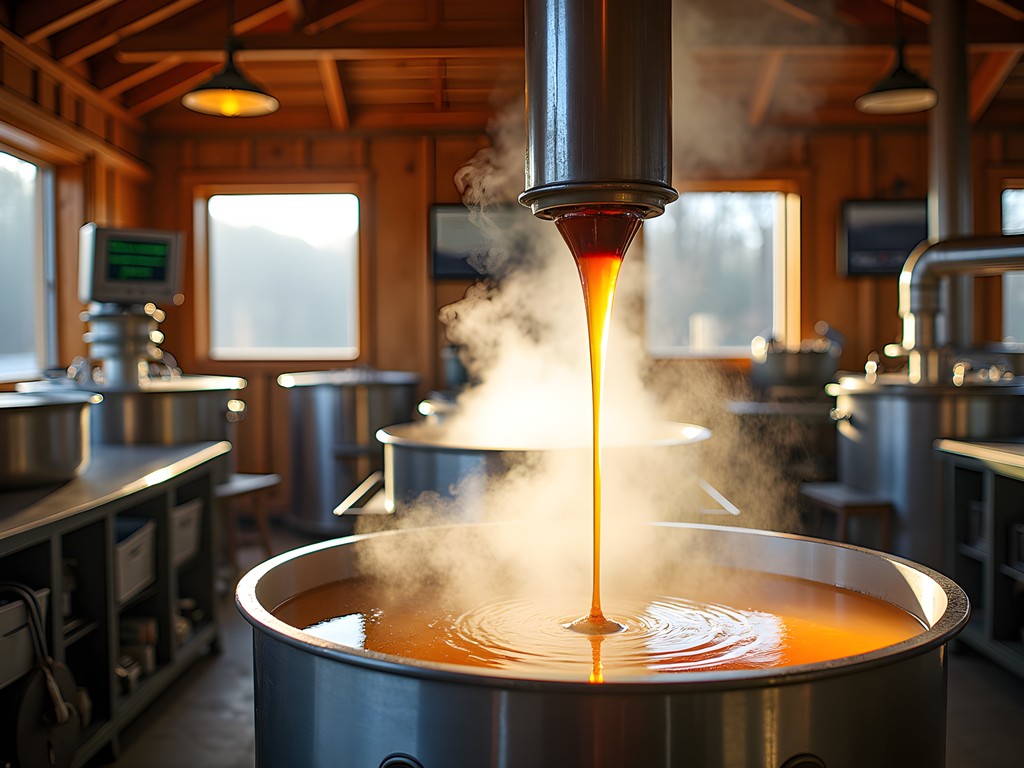
💡 Pro Tips
- Visit sugarhouses during weekdays for more personal attention and in-depth conversations with producers
- Sample different grades of maple syrup side-by-side to understand the subtle flavor differences
- Look for maple products beyond syrup—maple cream, maple sugar, and maple vinegar offer new culinary possibilities
Farm-to-Table Reimagined: Essex Culinary Resort & Spa
The term "farm-to-table" has become so ubiquitous in American dining that it sometimes loses meaning. At Essex Culinary Resort & Spa, however, they've reclaimed the concept by creating what might be the shortest supply chain I've ever witnessed—a journey measured in footsteps rather than miles.
The resort's on-site garden supplies much of what appears on your plate at their flagship restaurant, Junction. During my fall visit, I participated in their "Harvest, Cook, Dine" experience, which begins with collecting ingredients alongside Chef Jean-Louis in the resort's extensive gardens.
"This is education disguised as luxury," I note in my journal as we pluck purple carrots from the soil and snip fragrant rosemary. The resort has transformed traditional hospitality by making the educational component as important as the comfort.
In the teaching kitchen, our small group transforms our harvest into a seasonal feast under Chef Jean-Louis' guidance. My hands still smell of garlic and thyme as we sit down to enjoy the fruits of our labor—roasted root vegetables with maple glaze, herb-crusted local lamb, and an apple galette that makes me reconsider my relationship with pastry.
What impresses me most is the resort's commitment to making sustainability visible rather than hiding it behind kitchen doors. Compost systems, rainwater collection, and energy-efficient equipment are all part of the tour. The message is clear: luxury and environmental responsibility aren't mutually exclusive.
For couples seeking a deeper connection with Vermont's food culture, I recommend booking the cooking class package experience, which includes accommodations, classes, and a beautiful cookbook to continue your culinary education at home.

💡 Pro Tips
- Book cooking experiences at least two weeks in advance as they fill quickly, especially during peak foliage season
- Request the garden-view rooms to watch the resort's agricultural activities throughout your stay
- Save room for the cheese course featuring Vermont's award-winning artisanal selections
Artisanal Cheese Trail: Vermont's Living Dairy Tradition
"Cheese is alive," declares Marisa Mauro of Ploughgate Creamery as she gently presses a knife into a wheel of her cultured butter-enriched cheese. "It's constantly evolving, responding to its environment." This philosophy perfectly captures Vermont's approach to artisanal cheese—it's not just food production but a dynamic relationship between land, animals, and human craft.
Essex Junction serves as an ideal base for exploring Vermont's famous Cheese Trail, with several notable producers within a 30-minute drive. I've created a self-guided tour that reveals the diversity of the state's dairy traditions, from fresh chèvre to aged alpine styles.
At Shelburne Farms, a nonprofit working farm just south of Essex, I walk among Jersey cows grazing on rolling pastures before watching cheesemakers transform their morning milk into award-winning cheddar. The operation exemplifies how traditional agricultural models can be adapted for modern environmental challenges—their rotational grazing practices actually improve soil health and sequester carbon.
"We're not just preserving tradition," explains head cheesemaker Tom Jennison. "We're evolving it to meet today's environmental realities."
Further north at Green Mountain Blue Cheese, I discover how European traditions have been transplanted to Vermont's terroir, creating something entirely new. Their cave-aged blue cheese develops complex flavors from the specific microbiome of their aging rooms—a taste literally impossible to replicate elsewhere.
For the serious cheese enthusiast, I recommend bringing a cheese journal to document your tastings. The sensory experience of Vermont cheese deserves thoughtful reflection, and having a dedicated place to note flavor profiles, textures, and pairings enhances the educational value of your culinary adventure.
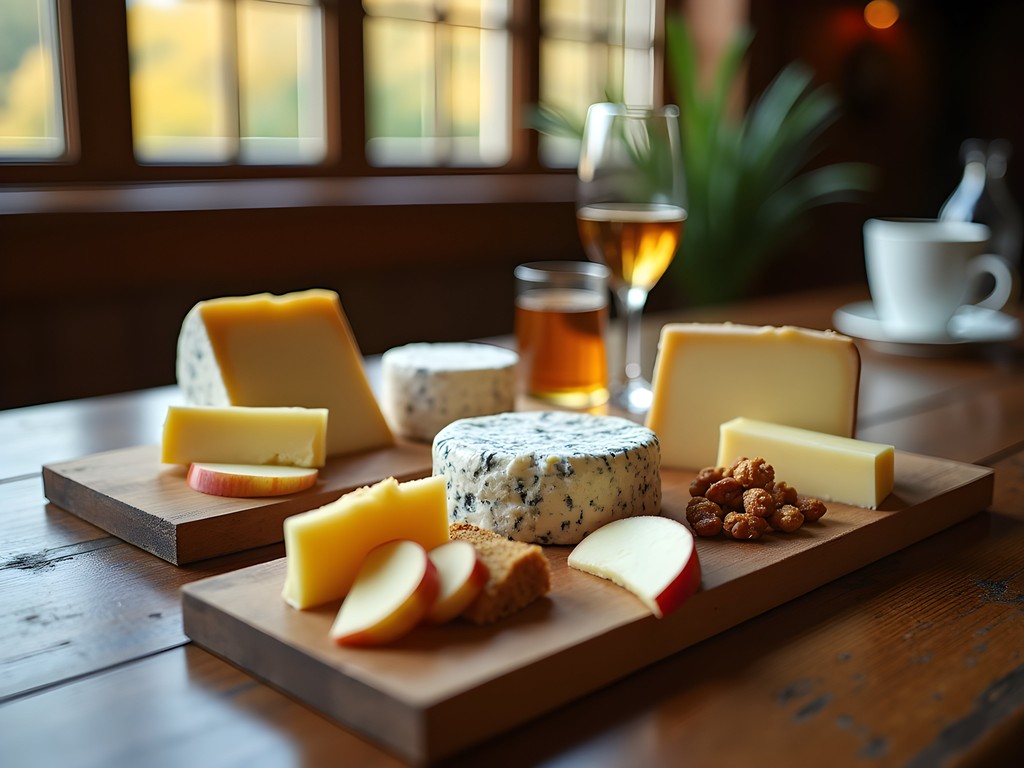
💡 Pro Tips
- Call smaller creameries ahead of time to confirm visiting hours, as some operate seasonally or by appointment only
- Bring a cooler with ice packs in your car to safely transport your cheese purchases
- Ask cheesemakers about their favorite pairings—many have unexpected suggestions beyond the usual wine and crackers
Sweet Endings: Sustainable Desserts and Ethical Chocolates
My exploration of Essex Junction's culinary landscape concludes with what might be its sweetest cultural contribution—a revolutionary approach to dessert that proves indulgence and ethics can coexist beautifully.
At Sweet Simone's, a bakery tucked into a renovated historic building near the town center, owner Lisa Curtis has created what she calls "transparent treats." Each pastry comes with a complete ingredient story—not just what's in it, but where each component originated. The cardamom in my morning bun was sourced through a women's cooperative in Guatemala; the flour in their sourdough comes from wheat grown and milled less than 50 miles away.
"Dessert has been disconnected from its agricultural roots for too long," Lisa tells me as we sip remarkably complex hot chocolate made with single-origin beans. "We're trying to restore that connection, one cookie at a time."
A few blocks away, I discover what might be Vermont's most environmentally progressive chocolate operation. NU Chocolat, a family-owned bean-to-bar chocolate maker, has reimagined the chocolate supply chain from the ground up. Their direct relationships with cacao farmers in South America ensure fair compensation, while their production facility uses renewable energy and compostable packaging.
The educational component is front and center—each chocolate bar includes information about cacao varietals, growing regions, and the specific farmers who cultivated the beans. It transforms a simple pleasure into an opportunity for deeper understanding.
For those wanting to continue their education at home, I recommend the chocolate tasting kit, which includes beans from different regions along with tasting notes to develop your palate for chocolate's remarkable complexity.
As I savor a bonbon filled with local maple cream, I reflect on how Essex Junction's sweet artisans are redefining luxury—not as exclusivity or excess, but as mindful appreciation of carefully crafted flavors that honor both people and planet.
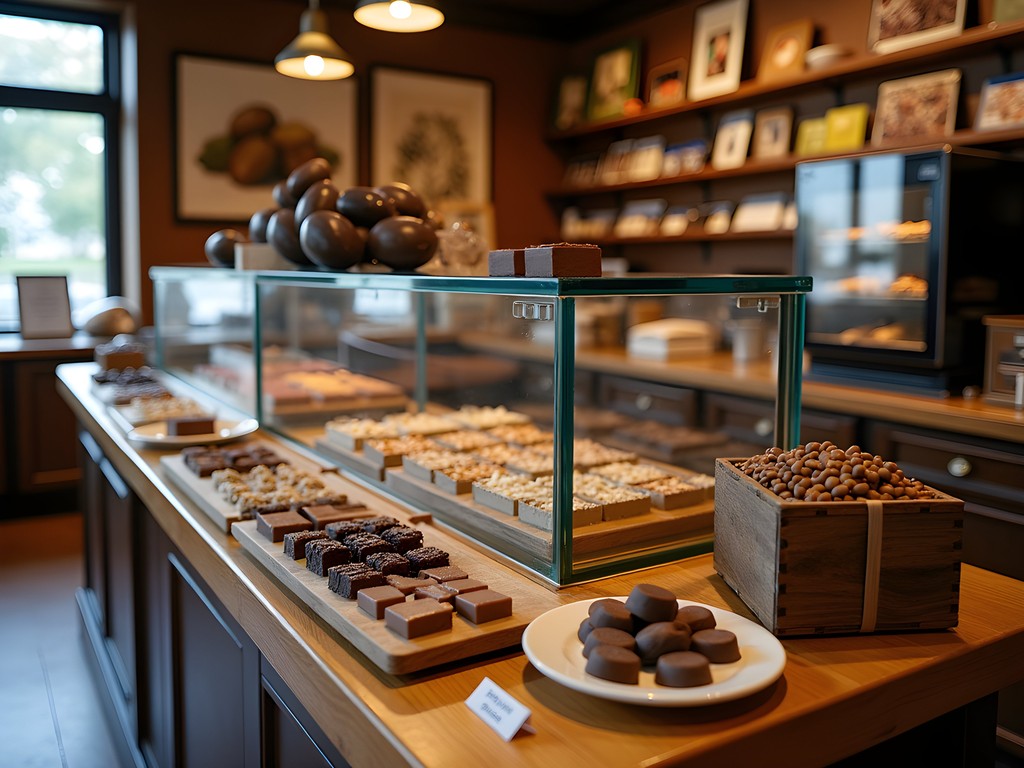
💡 Pro Tips
- Visit bakeries early in the day for the freshest selection, especially on weekends
- Ask for the origin story behind specific desserts—many artisans love sharing the narrative behind their creations
- Look for chocolate-making workshops at NU Chocolat, which offer hands-on experience with ethical cacao
Final Thoughts
As I pack my car to leave Essex Junction, my cooler bag filled with cheese, chocolate, and maple treasures, I'm struck by how this small Vermont community has quietly revolutionized the relationship between food, education, and environmental stewardship. The culinary experiences here aren't just delicious—they're transformative, challenging visitors to reconsider their own food systems back home. Essex Junction proves that sustainable gastronomy isn't about deprivation but about deeper connection—to farmers, to land, to tradition, and to innovation. Whether you're a dedicated foodie or simply someone who appreciates thoughtful hospitality, this corner of Vermont offers a template for how tourism and environmental education can nourish each other. I invite you to taste for yourself what mindful cultivation of both land and palate can produce. The maple-sweetened memories will linger far longer than the treats themselves.
✨ Key Takeaways
- Essex Junction offers an accessible entry point to Vermont's sustainable food culture beyond the more touristy Burlington area
- Participating in hands-on culinary experiences creates deeper educational connections than dining alone
- The fall harvest season provides the richest diversity of flavors and agricultural activities for food-focused travelers
📋 Practical Information
Best Time to Visit
September through mid-October for peak harvest and fall foliage
Budget Estimate
$150-250 per day per couple (accommodations, meals, activities)
Recommended Duration
2-3 days (weekend)
Difficulty Level
Easy

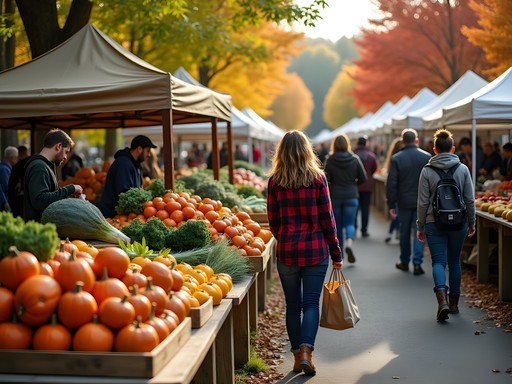

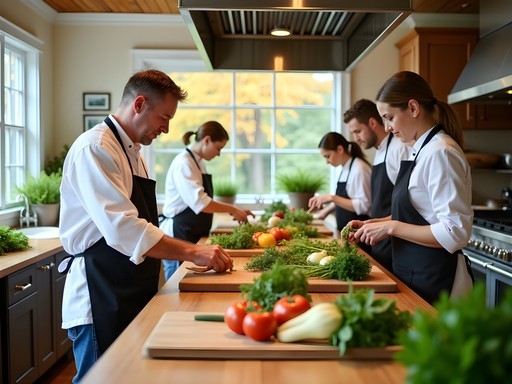
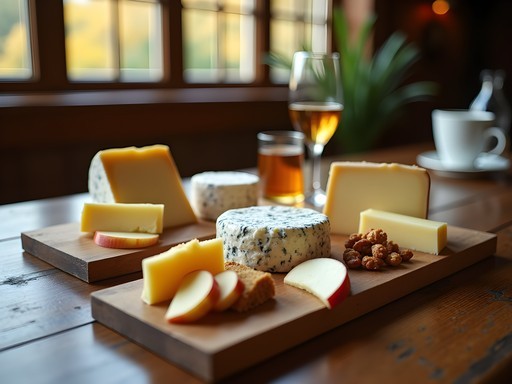
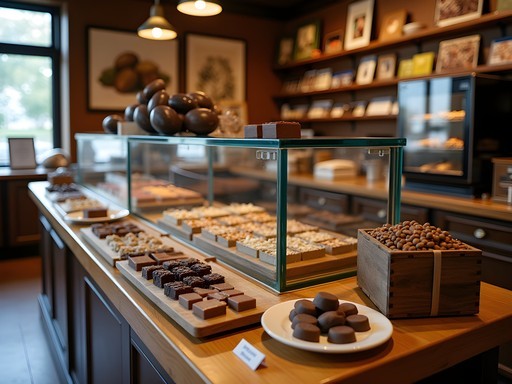



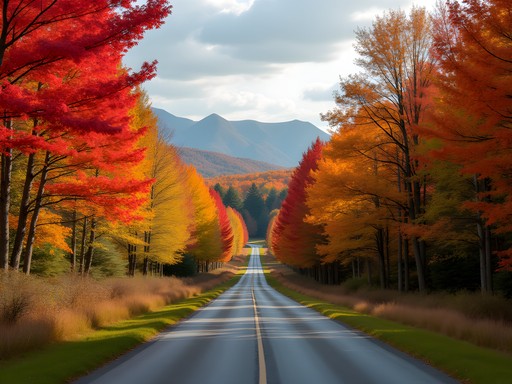






Comments
backpackseeker
That cheese trail sounds amazing! Adding Essex to my summer travel list for sure.
photogal
Do it! I went last summer and the cheese was incredible. Make sure to hit up the farmers market too - I still dream about those fresh pastries!
backpackseeker
Thanks for the tip! Any specific cheese farms you'd recommend?
roamtime
Great post! For anyone visiting Essex Junction, don't miss the cheese tasting at Dakin Farm - they let you sample everything and the staff really knows their stuff. Also, the bread at Barrio Bakery is worth the early wake-up. Their sourdough with local butter and that Vermont maple syrup... perfect breakfast!
Bryce Diaz
Lionel, your post brought back memories of my own Vermont journey last fall. There's something magical about Essex Junction that captures the essence of Vermont's food culture without the touristy feel of Burlington or Stowe. My favorite discovery was a small maple producer just outside town - third generation family operation where the grandfather still taps trees the old way. They don't advertise but locals know them well. If anyone's heading there, ask around for Miller's Sugar Shack - their dark amber syrup is life-changing on sourdough pancakes. The Five Corners market reminds me why farmers markets in small communities often outshine those in major cities - genuine connections between makers and customers.
roamtime
Miller's Sugar Shack is a hidden gem! Their maple candy is incredible too. Did you try their maple cream? I'm still dreaming about it.
backpackpro
Just got back from Essex Junction last week! The cheese trail was incredible - we spent three days just visiting different creameries. Definitely recommend bringing a cooler if you're driving like we did. We filled ours with Vermont cheddars and a maple cream that I'm already rationing because it's too good. The Essex Culinary Resort cooking class was worth every penny too - learned how to make proper maple glazed salmon!
tripfan
Going to Essex next month! Is the farmers market worth planning around?
Bryce Diaz
Absolutely! Time your visit for a Friday if possible - that's when most local farmers bring their freshest produce. The bread guy (can't remember the name) sells out by 10am, so go early!
tripfan
Thanks for the tip! Will definitely plan for Friday morning then.
Douglas Bradley
Excellent write-up on Essex Junction's culinary scene, Lionel. I visited last autumn and was particularly impressed by the agricultural integration with local restaurants. One thing I'd add is the seasonal nature of Vermont's food culture - visiting during different harvest periods yields completely different experiences. The apple harvest in September transformed many menus with creative cider pairings and apple-infused dishes that weren't available during my spring visit. Did you notice significant menu shifts between your seasonal pilgrimages?
roamtime
So true about the seasonal differences! Summer berries vs fall apples completely change the experience. I've been in June and October - like visiting two different culinary worlds.
coffeezone
Vermont cheese trail is the BEST! Did you try the Shelburne Farms cheddar?
wildguide
Those photos of the maple syrup production made my mouth water! Great post!
springclimber
Right? I'm already planning another trip for sugaring season in March!
Sophia Gomez
Lionel, your post brought back wonderful memories of my trip to Essex Junction! I had to visit for a quick business conference but ended up falling in love with the culinary scene. The Vermont cheese trail is no joke - I had to ship a care package home because I couldn't fit everything in my luggage. The unexpected highlight was actually meeting a third-generation dairy farmer at the Five Corners Market who let me sample fresh cheese curds that literally squeaked when you bit into them. That's how you know they're fresh! If anyone goes, don't miss Champlain Valley Creamery - their organic triple cream is life-changing.
citylover
Planning a trip for October - is the farmers market still running then or is it summer-only? Also curious if the maple production tours happen year-round?
Sophia Gomez
I was there last October for a business trip and extended my stay for the weekend. The farmers market runs through mid-October but with fewer vendors. For maple, the actual sugaring season is spring (March-April), but most of the bigger operations offer tours and tastings year-round. Palmer's Sugarhouse gives an excellent off-season tour that explains the whole process. The fall colors make it an absolutely magical time to visit!
citylover
Thanks Sophia! Palmer's is going on my list.
Venture X
Premium card with 2X miles, $300 travel credit, Priority Pass